Bladder dysfunction –
A condition in which the individual cannot control bladder activity.
Bowel dysfuncion –
A condition in which the individual cannot control bowel activity.
Cauda equine —
A group of nerves roots located at the end of the spinal cord
Cauda equina syndrome –
A condition where the spinal canal narrows and compresses the nerve roots causing numbness in the buttocks, thigh and genitalia. This condition can lead to the loss of bowel and bladder control.
Cervical –
Refers to body structures relating to the neck.
Cervical vertebrae –
Refers to the C1-C7 vertebrae in the spinal cord.
Coccyx –
A bone located at the bottom of the spine. Also referred to as the ‘tail bone.’
Disc –
Refers to a piece of tissue located in between vertebrae to absorb shock.
Herniated disc –
A condition in which a disc’s outer ring is torn.
Herniation –
Abnormal protrusion of tissue through an opening
Inflammation –
An internal or external reaction in which a contained part of the body becomes red, swollen, warm and painful.
Lumbar vertebrae –
Refers to the L1-L5 vertebrae located between the thoracic and sacral vertebrae.
Rupture –
A tear or break to a body structure.
Sacrum –
The large bone located at the bottom of the spine and back of the pelvis comprised of the sacral vertebrae.
Saddle anesthesia –
The loss of sensation in the inner things, area around the rectum and back of legs.
Sciatica –
Pain caused by the sciatic nerve extending from the buttock to the back side of the thigh.
Spinal column –
The series of vertebrae which protect the spinal cord.
Spinal cord –
The primary column of nerve tissue located in the vertebral canal that attaches to the brain.
Spinous process —
A projection on the back side of a vertebra where muscles and ligaments attach.
Thoracic —
Refers to structures related to the chest.
Thoracic vertebrae –
Refers to the T1-T12 vertebrae located between the cervical and lumbar vertebrae.
Vertebra –
Refers to the 33 bone structures that comprise the spinal column.














